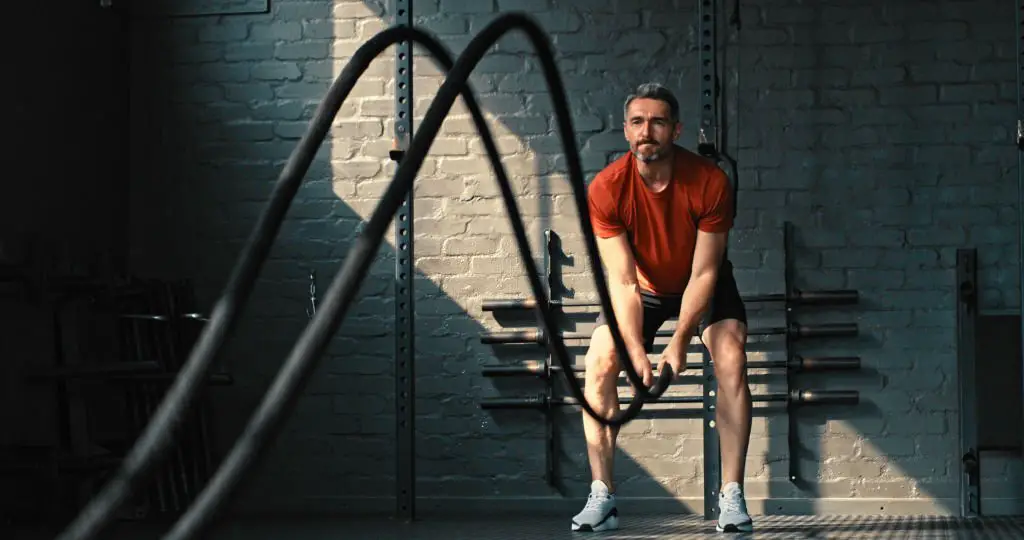Are you an advanced rowing machine user looking to improve your speed and technique? Or a beginner seeking guidance on how to get started with effective workouts? Look no further! In this blog post, we’ll unlock the secrets of rowing by exploring average speeds and techniques for improving them. Plus, we’ll share tips on staying motivated throughout your journey. Get ready to elevate your rowing game!
Table of Contents
Understanding Rowing Speed
Rowing speed is an essential aspect of the sport, and understanding it can help you improve your technique. The average rowing speed varies depending on several factors, including stroke rate, power output, and distance traveled. Knowing your average rowing speed can help you set realistic goals for improvement.
Several factors affect rowing speed, such as body positioning, power application through the drive phase of each stroke cycle and recovery phase inefficiencies. Increasing your velocity in a healthy way without sacrificing form or risking injury requires a balance between these different inputs to generate optimal efficiency with maximal boat acceleration forward toward terminal velocity. Take time to learn about these factors so that you can make appropriate adjustments in your workouts to achieve better results safely over time.
What is the Average Rowing Speed?
Rowing, like any other form of exercise, has a specific average speed that can be achieved by most individuals. The average rowing speed varies depending on several factors such as age, gender, weight and fitness levels. However, with the right training and technique improvements, it is possible to increase your average rowing speed over time.
Improving your rowing technique and incorporating HIIT workouts can increase your average rowing speed over time.
One of the key components in improving your rowing speed is focusing on proper technique. This includes maintaining good posture throughout the stroke cycle while keeping a consistent pace and rhythm. Additionally, incorporating high-intensity interval training (HIIT) into your workouts can also help improve overall fitness levels which can ultimately lead to faster rowing speeds.
Factors that Affect Rowing Speed
Rowing speed can be affected by various factors, including technique and strength. The proper technique involves maintaining a steady rhythm and good posture, while adequate strength allows for sustained power output. Additionally, the type of equipment used can also affect rowing speed as different machines may have varying resistance levels or features that impact performance. By focusing on these key factors and continuously refining technique and building strength through targeted workouts, rowers can improve their average speed over time.
Improving Rowing Speed
To improve your rowing speed, it’s important to focus on proper technique. Make sure you’re sitting up straight and engaging your core muscles throughout the entire rowing motion. Your arms should be fully extended before pulling back with your shoulders and legs in a powerful, fluid movement.
In addition to perfecting your technique, incorporating high-intensity interval training (HIIT) workouts into your routine can help increase speed and endurance. Try alternating between short bursts of all-out effort followed by brief periods of active recovery for optimal results. Remember to listen to your body and gradually build up intensity over time.
Perfecting Your Rowing Technique
Mastering the catch and finish positions, maintaining a straight back throughout the stroke, and using leg drive to generate power are all essential elements in perfecting your rowing technique. To ensure you are getting the most out of your workouts, take note of these tips:
- Start with proper positioning:
- before beginning each stroke, ensure your body is in the appropriate position by sitting tall with a slight lean forward.
- Catch Position:
- as you begin pulling towards yourself (the catch), keep your arms straight while leaning slightly forward until they reach about knee height.
- Finish Position:
- once you have pulled fully towards yourself (the finish), lean back slightly while lifting your hands up to chest level before returning to starting position.
- Maintain good form throughout each stroke by keeping a straight back without slouching or rounding shoulders.
- Use leg drive effectively by pushing down hard on the foot pedals during the first half of every stroke.
By incorporating these techniques into your rowing routine consistently over time, you will see improvements in both speed and endurance. Don’t get discouraged if progress feels slow – practice makes perfect!
Training Tips for Improving Rowing Speed
Focusing on building endurance through longer rows is another way to improve your rowing speed. Set a distance goal for yourself and aim to complete it in a certain amount of time. As you get stronger, increase the distance or decrease the time limit for added challenges. Remember to maintain good form throughout the long rows to avoid injury.
Varying resistance levels on the machine are also essential in challenging yourself during workouts and improving overall speed. Experiment with different settings such as increasing resistance or decreasing drag factor during some sessions, which will help engage different muscle groups and prevent plateauing progress over time!
Integrating HIIT Workouts for Optimal Results

Creating high-intensity intervals with short rest periods is a surefire way to challenge your body and increase the effectiveness of your HIIT workouts. By pushing yourself during each interval and limiting your rest time, you can boost your heart rate, burn more calories, and build endurance faster.
Increasing resistance during intervals for greater muscle burnout is another effective strategy to maximize the benefits of HIIT workouts. Whether you’re using a rowing machine or other equipment, gradually adding resistance over time will help you develop strength while keeping up the intensity level of your workout.
Adding variety to HIIT workouts with different exercises and timeframes not only helps prevent boredom but also ensures that all muscle groups are targeted effectively. Incorporating various exercises such as sprints, burpees or mountain climbers can keep things interesting while allowing for a full-body workout in shorter amounts of time.
Key takeaways:
- Short rest periods create high-intensity intervals
- Gradual increase in resistance boosts muscle development
- Variety in exercises prevents boredom while targeting all muscle groups
Staying Motivated
Setting realistic goals and finding support is key to staying motivated in rowing. When setting goals, make sure they align with your current fitness level and the amount of time you have available for training. Break them down into smaller milestones that are achievable, and track your progress to celebrate each achievement along the way.
Finding support can come in many forms. Join a rowing club or team where you’ll find like-minded individuals who share your passion for the sport. You can also enlist the help of a coach or mentor who can provide guidance on technique and beginner workouts, as well as hold you accountable for reaching your goals. Don’t be afraid to ask for help when needed – we all need support at some point!
Setting Realistic Goals
Understanding your current fitness level is crucial when setting realistic goals for rowing. Assessing your strengths and weaknesses will help you identify achievable short-term and long-term goals that are tailored to your abilities. It’s important to be honest with yourself about what you can realistically achieve, as this will set the foundation for a successful training plan.
Breaking down larger goals into smaller milestones is another key factor in setting realistic goals. This not only makes the overall goal less daunting, but also allows for regular progress assessments along the way. By achieving these small milestones, you’ll build confidence in yourself and stay motivated to continue pushing towards your ultimate goal of improving your average speed on the rowing machine.
Finding Support and Accountability
Joining a rowing club or finding a workout buddy can provide the support and accountability needed to stay motivated. Not only do you have someone to push you during workouts, but being part of a community helps you stay committed to your goals. Tracking progress through apps or journals is also important for staying accountable. Apps like Concept2 Logbook allow users to track their progress and compare it with others in the community, while journals provide an opportunity for self-reflection and goal-setting.
Seeking guidance from experienced coaches is another key aspect of finding support and accountability. Coaches not only provide technical advice on proper form and technique, but they can also offer encouragement during tough training sessions. They are there to help athletes achieve their goals by providing personalized training plans that align with their abilities, strengths, and weaknesses. With the right support system in place, rowers can unlock new levels of performance on the machine!

